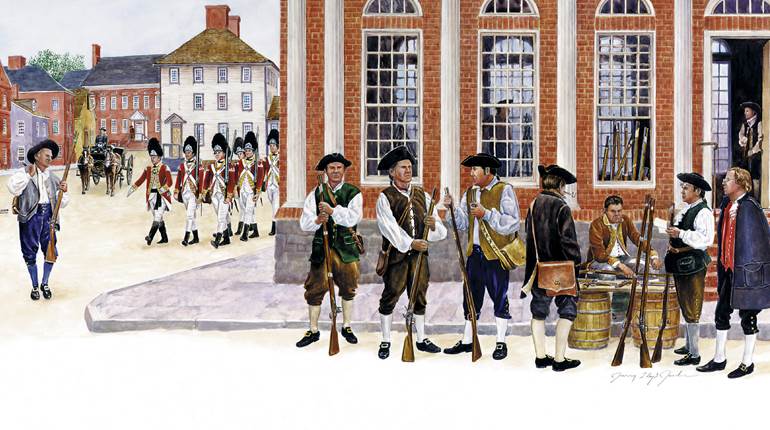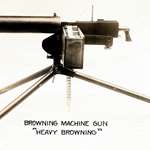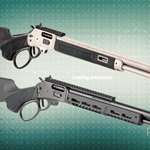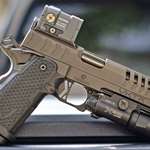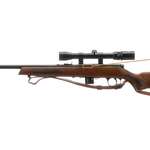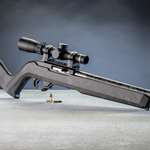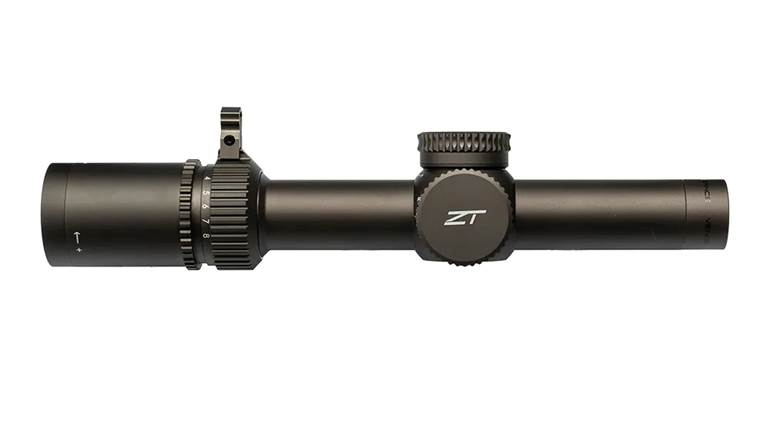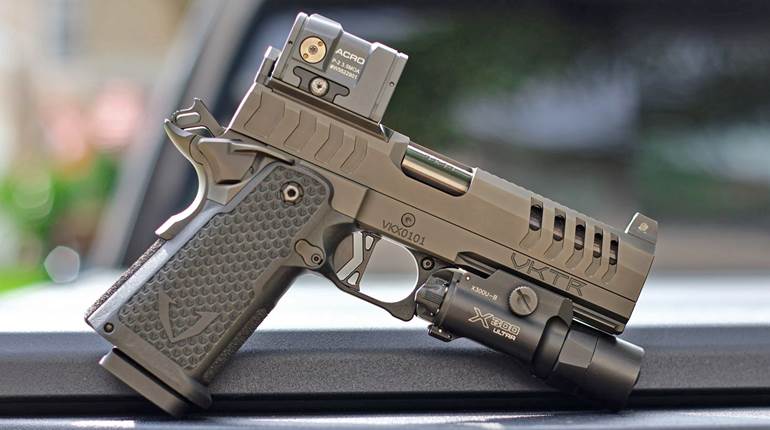
Much of human history is tied to the firearms man has invented to wage war and defend himself from others. For me, one of the most fascinating periods is the waning years of the 19th century and the first half of the 20th. It is during this period that the Industrial Revolution came into full bloom, yet carried with it the notions of craftsmanship and beauty from a time when such things as assembly lines and interchangeable parts were in their infancy.
The Thompson submachine gun is a perfect example. If you ever have the opportunity to examine one, you’ll see the straight lines and perfect bevels and radii of components made by hand, one at a time, combined with the latest technology of the age to produce a tool that could lay down fierce fire in the close quarters of hand-dug trenches. Even better, if you are blessed with the opportunity to send a magazine or two downrange, you will marvel at the common strengths of men of the day to haul around and be able to control a 13-lb. firearm that threatens to leave your hands at any instant.
To truly appreciate all that is the Thompson, let’s step back and take a look at what and who brought it about. Then it will be easier to accept why it remained in service for a half century. It takes something special to last that long when so many seek to improve or supersede a design.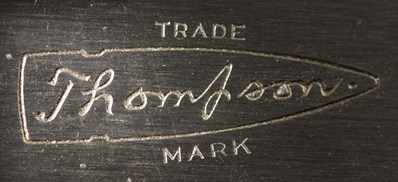
John Taliaferro Thompson was born on Dec. 31, 1860, in Newport, Ky., to a military family. His youth was much like that of a military brat, living from post to post, yet by the age of 16 he had decided to make the military his career, just as his father had. Thompson chose artillery and engineering as his chosen specialties, and by 1890 he was assigned to the U.S. Army’s Ordnance Department, where he specialized in small arms and spent the remainder of his service.
During the Spanish-American War, Thompson—after being promoted to lieutenant colonel—served as Chief Ordnance Officer for the commander of the Cuban campaign, General William R. Shafter. It was here that Thompson had his first taste of automatic weapons, and he quickly realized the effectiveness of these guns.
Thompson retired from the army in November 1914, just as World War I was ginning up in Europe. He took a position with Remington Arms of Ilion, N.Y., as Chief Engineer, ensuring that plenty of Pattern 14 Enfield rifles reached British forces as well as Mosin-Nagant rifles made their way to Russian troops from the Eddystone Arsenal in Chester, PA.
Trench warfare became an accepted and primary tactic during World War I. The trench tended to nullify the accuracy, range and effectiveness of bolt-action rifles with high-intensity cartridges—provided the soldier kept his head down. Rushing a trench was largely ineffective because the relatively slow operating bolt actions were too slow to be of much good. Within a couple of years Thompson started experimenting with automatic weapons—so-called trench brooms—that would be more effective in clearing trenches.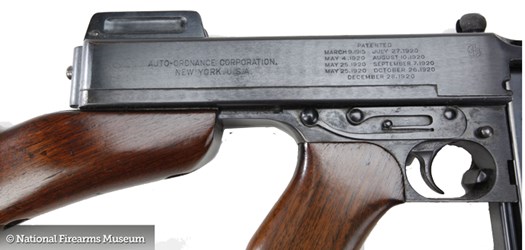
Early on, Thompson imagined a semi-automatic rifle to serve as a trench broom. For cartridges with major power—the .30-06 Springfield, for example—automatic or semi-automatic arms need a locked breech and a gas system for reliable and controllable operation. Thompson realized that a gas-operated arm would likely be too cumbersome and heavy as a trench broom, where the physical conditions were tight, ranges tended to be very short, and the power of a major-caliber rifle was not needed, but handiness and quick handling were. In short, what was needed was an arm capable of withering fire, chambered in a cartridge that was effective at short range in a package easily manipulated by a single man.
Thompson was struck with an idea one of his contemporaries, naval officer John Bell Blish, came up with. Blish observed that when a naval gun utilizing an interrupted-thread breech was fired with a full load, the breech remained pretty much completely closed. However, when fired with lighter loads, the breech tended to unscrew a bit. He concluded that dissimilar metals meeting on an incline from one another, and under heavy pressure, would adhere to each another, while lower pressures did not expose this phenomenon. Blish patented his observed principal (U.S. Patent 1,131,319) in 1915.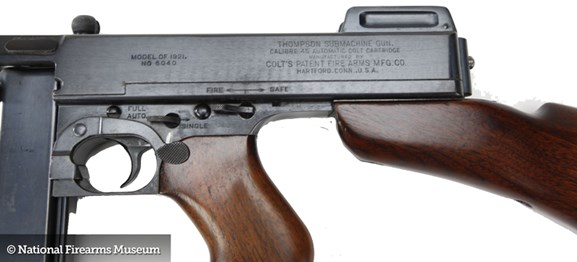
After acquiring venture capital from self-made millionaire and financier Thomas F. Ryan of New York, Thompson founded the Auto Ordnance Company in 1916. His first attempt was an “Auto Rifle” utilizing Blish’s principle as a delayed-blowback operation. After a number of trials, however, it was determined that the .30-06 cartridge was too powerful for the Blish concept of operation. Still later, in 1929, the idea was resubmitted in the form of .276 Pederson chambered rifle, but again it was dismissed because of the necessity of pre-lubricated ammunition in order for the rifle to function, and the danger to bystanders during ejection. But long before Pederson’s attempt, Thompson took another tack and applied the Blish patent to a fully automatic carbine that fired from an open bolt, chambered in .45 ACP.
Thompson’s design crew—Theodore H. Eickhoff, Oscar V. Payne, and George E. Goll—quickly began working on a project called “Annihilator I,” and by 1918 had a testable prototype available. Unfortunately for Auto Ordnance at the time, World War I was over, and the military market for what was called the Thompson Submachine Gun dried up rather quickly. An aside: Some think that the Thompson was the first submachine gun, but that is not true. Theodor P. Bergman—a German industrialist—is credited with the first submachine gun, the 9 mm MP 18, introduced in 1918, which saw limited use in the Great War. The Thompson, however, is the first to use the term “submachine gun” in its name.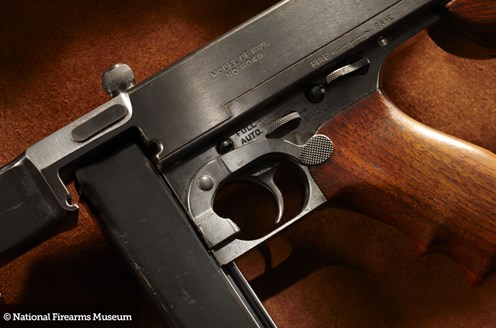
Auto Ordnance began producing and selling its Thompson Submachine Gun in 1921, often referred to as the Model 1919. At the time, virtually anyone with the cash could buy one across the counter. The price, however, was a bit steep at $200, including one 20-round stick magazine—the equivalent of nearly $3,000 today. There are some early advertising posters of a cowboy protecting his herd with a Thompson. Sales trickled in, not enough to turn everyone associated with Auto Ordnance rich, but enough to keep the lights on. The Marine Corps purchased a few, as did the U.S. Postal Inspection Service. A handful of police departments added a Thompson or two to their stores, and a limited number of copies were sold internationally. The Model 1928 reduced the firing rate from an uncontrollable 1,500 rpm to an easier to handle and more effective rate of 830 rpm. These slower rate-of-fire Thompsons ditched the Bish-type dissimilar metal, delayed-blowback operation in favor of a straight blowback.
The company began offering a Cutts Compensator—the forerunner of today’s muzzle brake—in 1926. A couple of years later Federal Laboratories assumed the distributing of the Thompson. By that time the basic Model 21 was offered at $175, the Model 21C (with the Cutts Compensator) was $200 and a 50-round drum magazine would lighten the wallet a staggering five bucks.
One little problem developed, however, that would prove nearly fatal to the Thompson. On Jan. 17, 1920 the Volstead Act became the law of the land, and the country officially went dry—no booze. Prohibition—as it became known—had the unintended consequence of giving birth to widespread criminal production and distribution of alcoholic beverages. Since the activity itself was illegal, vicious and uncontrollable criminal gangs sprouted all over the country like weeds after a spring rain. The guns of choice for most of these gangs was the Thompson Submachine Gun, along with the Browning and Colt Automatic Rifles. Compounding this overabundance of criminals was The Depression in October 1929. A country where there was no work and nothing to drink became unruly, and many of the criminals from Al Capone to Bonnie and Clyde were adored by much of the public—that is until these criminals began killing innocent citizens during their nefarious deeds.
It was during this time period when the Thompson garnered some of its most infamous nicknames—Chicago Typewriter, Chicago Piano, Drum Gun, Chicago Organ Grinder and The Chopper, to name a few. If the city of Chicago seems overly prevalent it was because of it being central to the bootleg liquor trade and the gangs that ran those operations. On Feb. 14, 1929, five members of the North Side Gang and two other affiliates were mowed down gangland style in a warehouse at Dickens and Clark in Lincoln Park, Chicago. Gangsters believed to be from Al Capone’s gang—though this was never officially proven, likely due to the prolific corruption in Chicago’s Police Department and City Government—posing as police officers, were the executioners. Two Thompsons, along with a pair of shotguns were used to carry out what became known as the St. Valentine’s Day Massacre.
Prohibition was repealed on Dec. 5, 1933, but the carryover of gangland murders and the hue and cry from the public, along with an attempted assassination of Franklin D. Roosevelt, continued to pressure the government to act. Since the government was having only limited and sporadic success in dealing with gangland criminals, it turned to the only thing that was incapable of fighting back—the guns and otherwise law abiding citizens. 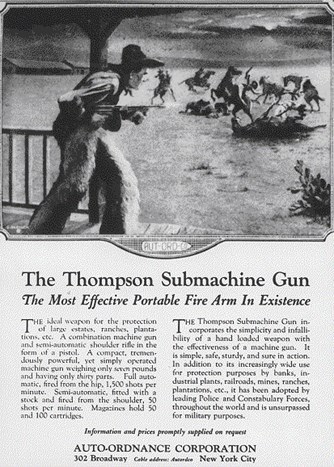
The government first attempted to outlaw the possession of all machine guns by the citizenry, but those in opposition were successful in preventing the draconian measures. However, members of the 73rd Congress led by Robert L. Doughton (D–NC), were successful in arguing that such firearms could be subjected to a tax. Leaving conventional handguns aside, the Congress passed the National Firearms Act of 1934, and President Roosevelt signed it into law on June 26, 1934. To possess such a firearm required the payment of a one-time $200 tax, proof of which was a stamp on the application. The law largely had its desired effect; private ownership of guns like the Thompson Submachine Gun was effectively eliminated by making it too costly to abide by the law.
Law enforcement and foreign sales kept Auto Ordnance afloat for a few years until 1938, when the U.S. military adopted two versions of the Thompson Submachine Gun, the M1 and M1A1. Changes from the 1928 include barrels without cooling fins, a simpler rear sight, moving the charging handle from the top of the receiver to the side and the elimination of the drum magazine. More than 1.5 million of the robust Thompsons were made, and they served throughout World War II, Korea and the Vietnam wars. The Thompson enjoyed—and still does—a reputation for reliability. The .45 ACP cartridge gave up a bit of stopping power and accuracy past 150 meters, but for short-range engagements the gun really lived up to its original nickname, Annihilator. After World War II, the Thompson saw service in no less than a dozen other conflicts, even as recently as the Iraq war.
With its sleek lines and powerful staccato sound signature, the Thompson Submachine Gun has starred in dozens of motion pictures worldwide for the better part of a century. Most recently it added a starring role in the made-for-television movie “The Highwaymen,” starring Kevin Costner as Frank Hamer, and Woody Harrelson as Manny Gault, as the two aging Texas Rangers who took down Bonnie and Clyde.
There is only a limited supply of Thompsons left, and fewer yet that can be fired. Most are too valuable to be shot since the possession of any full-auto firearms manufactured after 1986 is now prohibited by citizens. But if you are fortunate enough to find an owner who will let you shoot his, make sure you take him up on it. To actually shoot this iconic firearm is quite a thrill.
Additional Reading:
Frank Hamer: Legendary Lawman
The G.I. Thompson in World War II
The Tommy Gun In Country: The Thompson SMG in Vietnam
Thompson Submachine Gun












